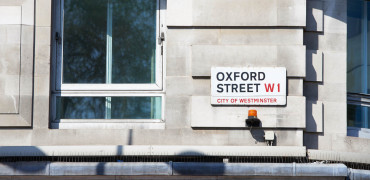You know things are serious when banks start to take notice. The past few years have left the big lenders feeling ‘wobbly’ about commercial property investment.
Once a rock-solid asset sector, commercial buildings such as offices and retail look less so in the shift to home working and online buying.
These trends have made the finance bros less keen to hand out easy loans to property owners, which is bad timing for those looking to re-finance in the current economic climate.
The bankers have already decided. Sustainable buildings are the priority.
Decarbonise your building
To give some scale to this issue, since 2019, falling commercial property values and the pressures of other rising business costs have created a financial gap in the commercial property market of more than £40 billion across Europe.
The message to property owners from potential lenders is: “De-risk your asset and we’ll think about it.”
In the past, reducing risk meant that office building owners had to show high tenancy rates with blue-chip corporate clients; hotels had to prove a steady income stream and retailers a steady future footfall.
Now, there’s a new risk area on the horizon: climate change. As governments around the world set their sights on national Net Zero targets, legislation and standards are putting pressure on the property sector to reduce its carbon footprint.
So, the banks are looking closer at the physical performance of buildings – energy use; carbon footprints; EPC ratings; and climate change mitigation.
And if property owners want to access finance in a tighter market, they must demonstrate that these climate risks are addressed, or risk being stuck with a stranded asset.
The biggest driver
The problems of high finance may seem far removed from everyday life in the construction industry. But the amount of money at stake means that this could be the most significant driver of change across the property sector – not just offices, but also retail, hotels and warehouses.
While the UK government prevaricates about its proposed increase of minimum EPC requirements to band B, the bankers have already decided. Sustainable buildings are the priority.
We have already seen a burst of refurbishment in the UK office market. The SectorScope continuously tracks stories of buildings that are refurbished and upgraded from an EPC of E to a B, and which increasingly achieve a BREEAM Excellent or Outstanding scores.
At a recent Mitsubishi Electric Road to Net Zero Seminar, engineers gathered to learn more about the challenge of refurbishing the existing building stock for a low-carbon future.
Speaking at the event, UKGBC Senior Advisor, Anna Hollyman, said: “There are huge opportunities for easy wins to optimise the performance of buildings. But we are past the point where incremental change will make an impact. Radical change is the key.”
Help is already on hand
Professionals in the HVAC and building services sector know that low-carbon solutions for cooling, heating and hot water (big contributors to carbon in buildings) are already out there.
The use of modern, modular kit, bivalent solutions or hybrid VRF means that buildings can be improved floor-by-floor or zone-by-zone. Lower GWP refrigerants, higher energy efficiencies and decarbonising heating – all are achievable with planning and sound engineering.
In ‘de-risking’ buildings, taking a radical approach need not mean doing it all at once. That approach is impractical for buildings which are occupied and in-use.
But it must mean leaving behind the old way of thinking about HVAC systems and putting carbon reduction at the top of the refurbishment agenda. With billions of pounds on the table, any economic arguments against upgrading systems are fading quickly.
Karen Fletcher, Editor The Sectorscope




